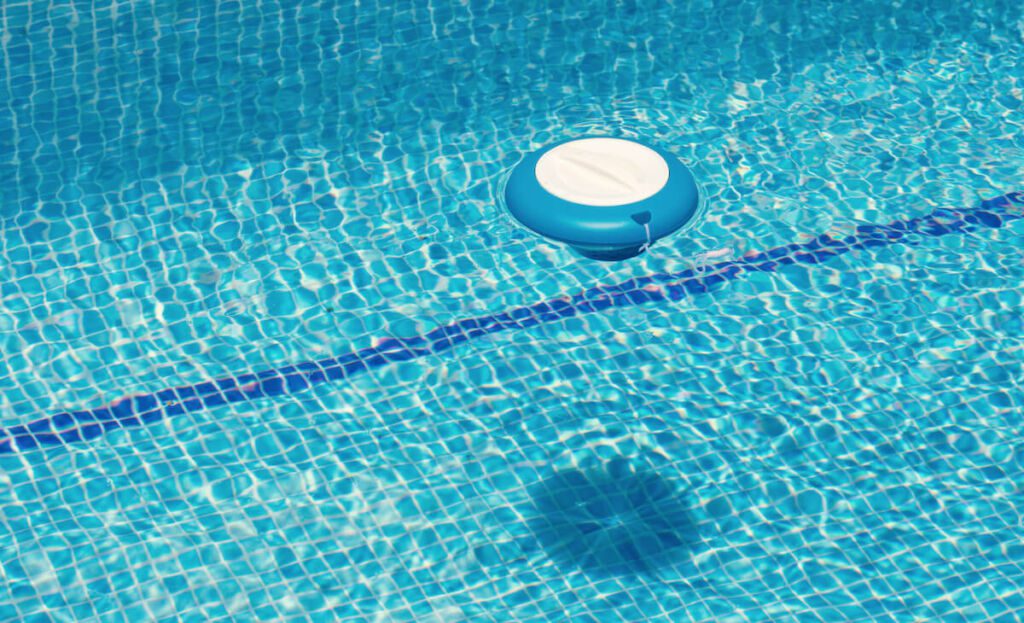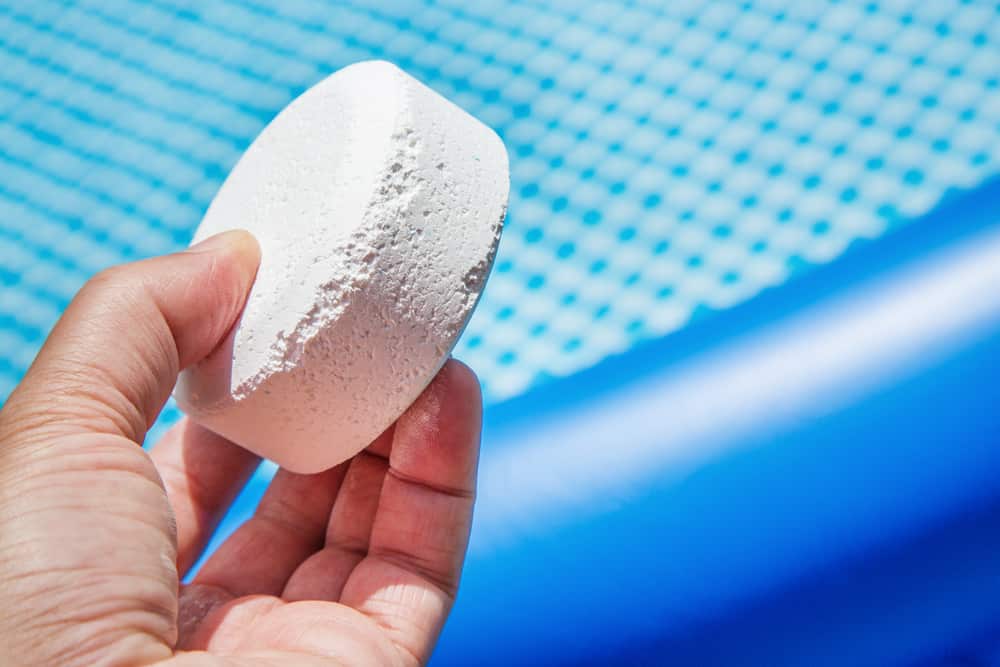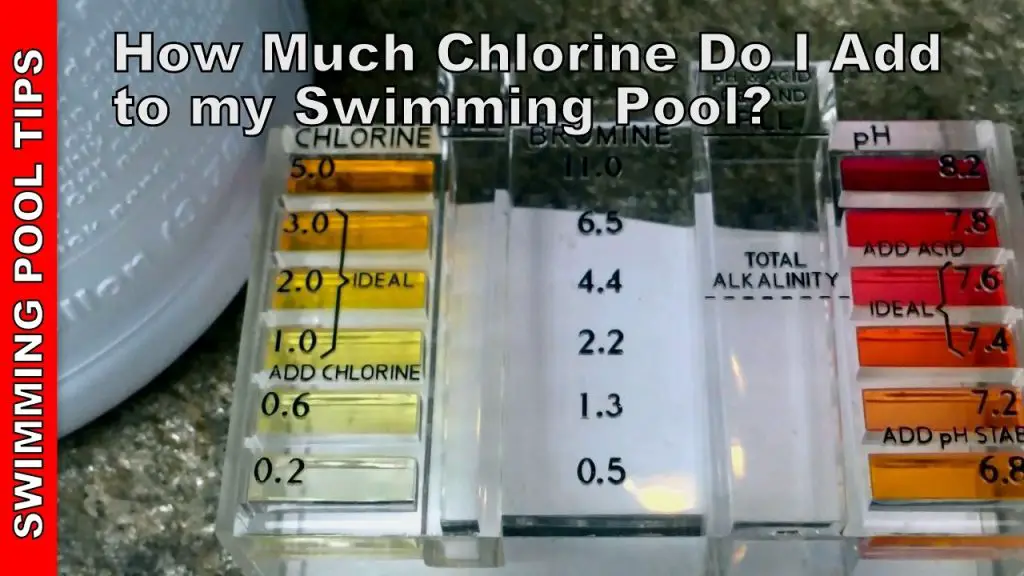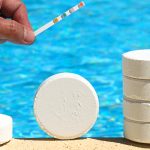To determine the exact amount of chlorine to add to your pool, you should follow the manufacturer’s instructions on the chlorine product packaging. Adding too much chlorine can result in skin and eye irritation, while adding too little can lead to inadequate sanitation.
Importance Of Chlorine In Pool Maintenance
To keep your pool water clean and safe for swimming, it’s crucial to maintain the right balance of chlorine. Chlorine is an essential part of pool maintenance, as it effectively kills bacteria, prevents algae growth, and oxidizes contaminants. Understanding the importance of chlorine in pool maintenance will help you ensure that your pool water remains crystal clear and safe for everyone to enjoy.
Role Of Chlorine In Keeping Pool Water Clean
Chlorine plays a vital role in keeping pool water clean by effectively eliminating bacteria and other harmful microorganisms. It acts as a powerful disinfectant, continuously sanitizing the water to create a healthy and hygienic environment for swimmers. Without adequate chlorine levels, the risk of waterborne illnesses and infections significantly increases.
Factors Affecting Chlorine Effectiveness
Several factors can impact the effectiveness of chlorine in pool water, including sunlight exposure, pH levels, and organic contaminants. Sunlight can cause chlorine to degrade more quickly, while high pH levels can reduce its sanitizing power. Additionally, the presence of organic matter such as leaves, oils, and sunscreen residues can consume chlorine, making it less effective in maintaining water quality.

Credit: clearcomfort.com
Types Of Chlorine For Pools
When it comes to maintaining a sparkling and safe swimming pool, the type of chlorine you use plays a crucial role in disinfecting the water. Different types of chlorine are available for pools, each with its own set of characteristics and benefits. Understanding the various forms of chlorine can help you make an informed decision about the best option for your pool.
Comparison Of Chlorine Types
Chlorine comes in different forms, including chlorine tablets, granular chlorine, and liquid chlorine. Each type has its unique features, and understanding the differences can help you choose the most suitable option for your pool.
Pros And Cons Of Different Chlorine Forms
| Chlorine Type | Pros | Cons |
|---|---|---|
| Chlorine Tablets | Convenient, slow-dissolving, long-lasting | Potential for over-chlorination, may cause pH imbalance |
| Granular Chlorine | Faster acting, no stabilizer, easy to use | Requires pre-dissolving, more expensive than tablets |
| Liquid Chlorine | No stabilizer, quickly dissolves, suitable for shock treatment | Requires frequent application, less shelf-stable |
By weighing these pros and cons, you can make an informed decision about which form of chlorine will best suit your pool maintenance needs.
Determining Pool Size And Condition
Determining the ideal pool size and condition is crucial in determining the amount of chlorine to add. By assessing factors such as water volume, bather load, and pH levels, you can accurately determine the necessary chlorine dosage for a clean and safe pool.
Determining Pool Size and Condition Measuring Pool Volume To add the right amount of chlorine to your pool, you need to know the pool’s volume. Considering Pool Usage and Environmental Factors Pool usage and environmental conditions impact chlorine needs. To determine pool size, measure length, width, and depth. Consider factors like bather load, weather, and sunlight exposure. Calculating pool volume helps in precise chlorine dosing. Account for any water features or other additions to the pool. Pool size and usage guide chlorine quantity for safe swimming. Environmental aspects affect chlorine effectiveness and longevity. Establishing pool volume ensures accurate chlorine addition. Accounting for usage and environment optimizes chlorine balance.
Credit: poolsbydesignaz.com
Calculating The Required Chlorine Dosage
Ensuring the correct dosage of chlorine is vital to maintain a clean and healthy swimming pool. The right amount of chlorine will effectively disinfect the water, preventing the growth of harmful bacteria and algae. To determine the appropriate chlorine dosage for your pool, you can use a pool chlorine calculator and make adjustments for specific situations.
Using Pool Chlorine Calculator
A pool chlorine calculator is a handy tool that can help you determine the exact amount of chlorine to add to your pool. These calculators take into account important factors such as pool volume, current chlorine levels, and water temperature. By inputting these data points, the calculator can provide you with a recommended dosage of chlorine.
To use a pool chlorine calculator:
- Measure your pool’s volume by referring to its specifications or using a pool volume calculator.
- Test the current chlorine levels in your pool using a pool test kit.
- Enter the pool volume and current chlorine levels into the pool chlorine calculator.
- The calculator will provide you with the required dosage of chlorine based on the recommended chlorine concentration.
Remember to always follow the manufacturer’s instructions when using a pool chlorine calculator, as different brands may have variations in their calculation methods.
Adjusting Dosage For Specific Situations
In certain situations, you may need to adjust the chlorine dosage recommended by the pool chlorine calculator. Here are some cases where adjustments might be necessary:
- High swimmer load: If your pool is frequently used by a large number of swimmers, you should increase the chlorine dosage to compensate for the increased organic matter in the water.
- Hot weather: During hot summer days, the sun’s rays can deplete chlorine levels more rapidly. In such situations, you may need to increase the dosage to maintain adequate sanitation.
- Algae growth: If you notice signs of algae growth in your pool, it is important to shock the water with a higher dosage of chlorine to eliminate the algae effectively.
- Heavy rainfall: After a heavy rainstorm, the dilution of pool water can lead to lower chlorine levels. Adjust the chlorine dosage accordingly to ensure proper sanitation.
By considering these specific situations and making necessary adjustments, you can ensure that your pool remains clean, safe, and ready for swimming enjoyment.
Methods Of Adding Chlorine To The Pool
To determine the correct amount of chlorine to add to your pool, you need to consider its current chlorine level and water volume. It’s essential to follow manufacturer guidelines for proper dosage and ensure consistent testing to maintain water quality.
Manual Chlorine Dispensing
To manually add chlorine, dispense the recommended amount directly into the pool water.
Automatic Chlorine Dispensers
Automated dispensers release chlorine consistently into the pool, ensuring proper sanitation.
Maintaining Proper Chlorine Levels
Maintaining proper chlorine levels in your pool is crucial for a clean and healthy swimming environment. To determine how much chlorine to add, test the water regularly and follow the manufacturer’s guidelines for your specific pool size and condition. It’s important to strike the right balance to ensure effective sanitization without causing irritation to swimmers’ skin and eyes.
Testing Chlorine Levels Regularly
To keep your pool water safe and crystal clear, it’s essential to test the chlorine levels regularly. Testing the chlorine levels helps you gauge whether your pool has enough chlorine to effectively kill bacteria and prevent algae growth. Grab a suitable test kit and follow the instructions to obtain accurate results.
To begin, collect a water sample from about elbow-deep under the water surface, away from any return jets. Pour the water into the testing vial up to the designated line. Add the appropriate reagents or test strips and securely seal the vial. Shake it gently, and wait for the specified time to allow the reaction to occur.
Once the reaction time has passed, compare the color of the water sample to the color chart provided. The color of the sample will indicate the chlorine level in your pool. Ideal chlorine levels typically range between 1 and 3 parts per million (ppm) for most residential pools.
| Chlorine Level | Action Required |
|---|---|
| Below 1 ppm | Add more chlorine to the pool immediately to raise the levels. |
| 1-3 ppm | Chlorine levels are considered ideal, and no immediate action is necessary. |
| Above 3 ppm | Allow the chlorine levels to decrease naturally over time. Avoid adding more chlorine until it drops below 3 ppm. |
Balancing Chlorine With Other Pool Chemicals
While maintaining proper chlorine levels is crucial, it’s equally important to balance chlorine with other pool chemicals for optimal water quality. Several chemicals play a role in maintaining the balance.
pH levels, for instance, should typically range between 7.2 and 7.8 for balanced pool water. If the pH levels are too low, it can cause chlorine to dissipate quickly, resulting in ineffective sanitization. Conversely, if the pH levels are too high, chlorine becomes less effective and can lead to water cloudiness.
To adjust the pool’s pH levels, add appropriate pH increasers or decreasers in small increments, following the manufacturer’s instructions. Regularly test and adjust the pH levels to maintain the desired range.
Additionally, it’s essential to monitor the pool’s alkalinity and calcium hardness levels. Alkalinity acts as a buffer, helping stabilize pH levels, while calcium hardness prevents water from becoming corrosive or scaling. Use appropriate chemicals to adjust these levels if necessary, ensuring they fall within the recommended ranges.
- Regularly test and adjust the chlorine levels to protect against bacteria and algae growth.
- Maintain proper pH levels to optimize chlorine effectiveness and prevent water cloudiness.
- Monitor and adjust alkalinity and calcium hardness levels to maintain balanced pool water.
- Follow the manufacturer’s instructions when adding chemicals to achieve the desired balance.
By testing chlorine levels regularly and balancing chlorine with other pool chemicals, you can ensure a safe and enjoyable swimming experience while keeping your pool water crystal clear.
Common Issues With Chlorine Levels
Chlorine Overdosing
Overdosing the pool with chlorine can lead to several issues such as skin and eye irritation, strong chemical odor, and bleaching of swimsuits and pool equipment. Excessive chlorine can also reduce the effectiveness of the sanitizer over time, resulting in the growth of algae and bacteria. It is essential to carefully measure and add the right amount of chlorine to maintain a healthy and balanced pool environment.
Chlorine Underdosing
On the other hand, inadequate chlorine levels can result in ineffective sanitation and the development of harmful bacteria and algae in the pool water. Insufficient chlorine can also lead to cloudy water and an increased risk of skin infections and waterborne illnesses. Regular testing and adjusting the chlorine levels as needed are crucial for ensuring proper pool sanitation.
Ensuring Safe And Effective Chlorine Use
To ensure safe and effective chlorine use in your pool, it’s crucial to add the correct amount of chlorine. The recommended dosage typically depends on the pool size, level of contaminants, and the type of chlorine used. It’s essential to carefully follow guidelines and use a reliable testing kit to determine the appropriate amount for maintaining a clean and safe swimming environment.
Ensuring Safe and Effective Chlorine Use Storage and Handling Precautions When it comes to pool maintenance, ensuring that your chlorine is stored and handled safely is crucial to preventing accidents and maintaining its effectiveness. Here are a few storage and handling precautions to keep in mind: – Store chlorine in a cool, dry, and well-ventilated area away from direct sunlight and moisture. – Keep chlorine containers tightly closed and away from any flammable or combustible materials. – Always store chlorine products out of reach of children and pets. – When handling chlorine, wear protective gear such as gloves and goggles to avoid skin and eye irritation. Best Practices for Chlorine Use In addition to proper storage and handling, following best practices for chlorine use is essential for maintaining a safe and clean swimming pool: – Test the pool water regularly to determine the appropriate chlorine levels. – Use a reliable and accurate pool water testing kit to monitor chlorine levels. – Follow the manufacturer’s instructions for adding the correct amount of chlorine to the pool based on water volume and current chlorine levels. – Avoid adding chlorine directly to the pool skimmer as it can cause damage to the filtration system. Instead, dilute the chlorine in a bucket of water before adding it to the pool. – Maintain proper circulation and filtration of the pool water after adding chlorine to ensure even distribution. In conclusion, prioritizing safe storage and handling, while also implementing best practices for chlorine use, is essential for maintaining a safe and clean pool environment. Adhering to these guidelines will help ensure that your pool remains a welcoming and enjoyable space for all swimmers.
Credit: www.fix.com
Conclusion
To sum up, ensuring the right chlorine levels in your pool is essential for a safe and clean swimming environment. By following the proper guidelines for adding chlorine, you can maintain the water quality and keep your pool in top condition.
Remember, balance is key for a refreshing and enjoyable swimming experience.





